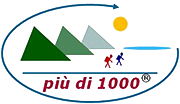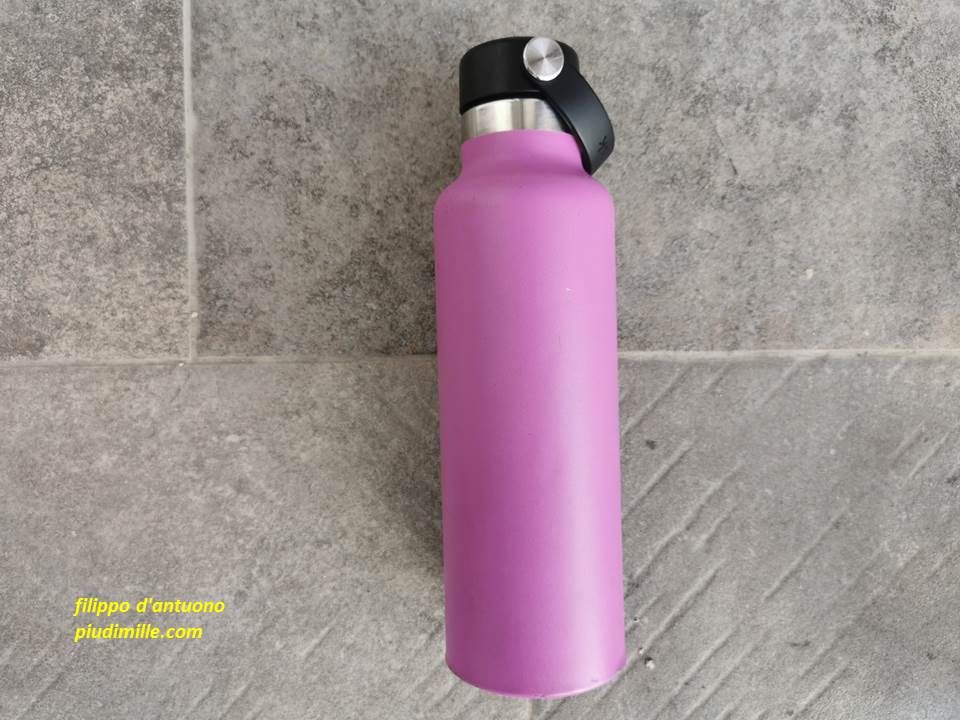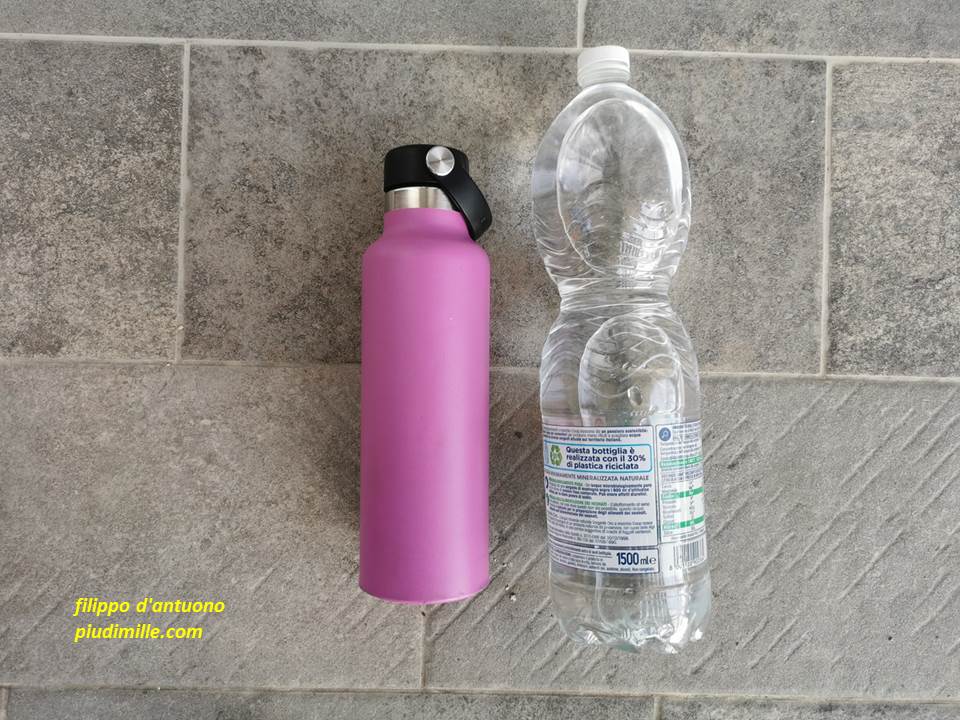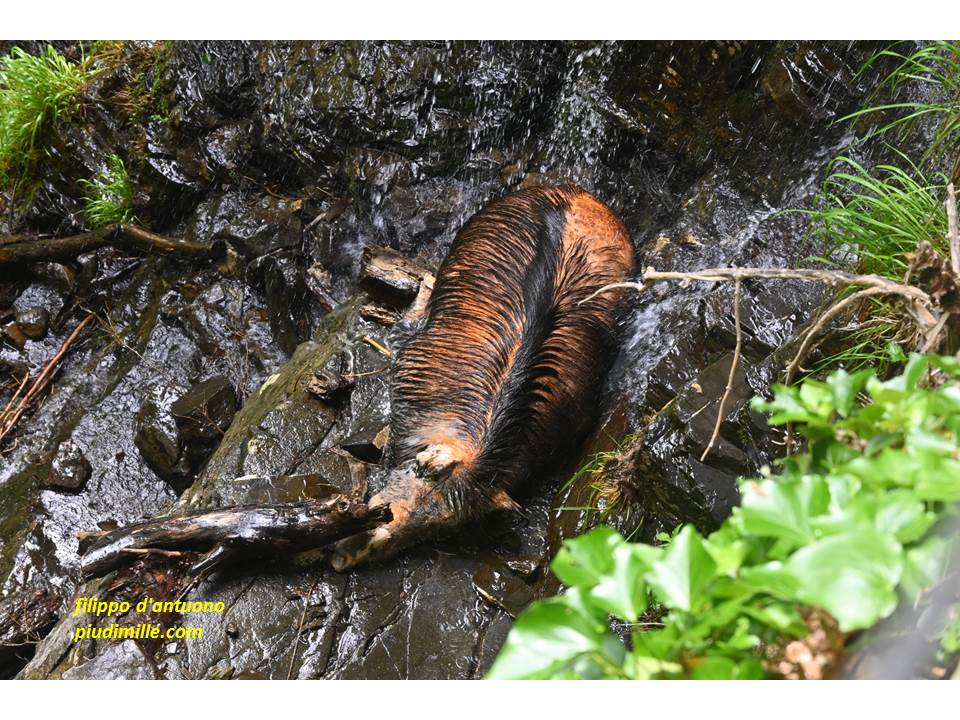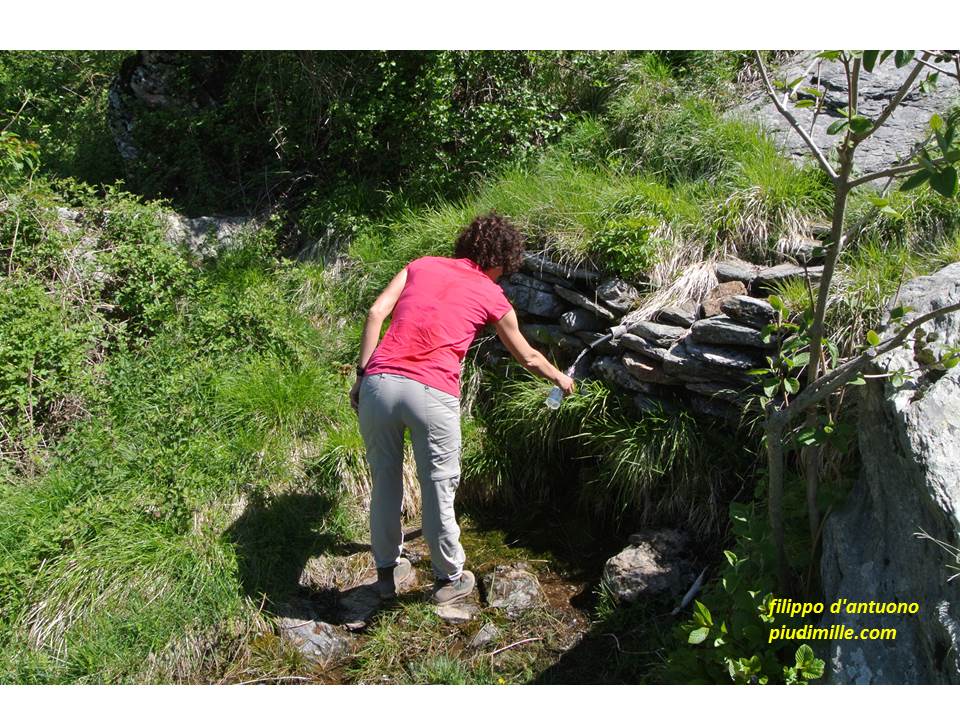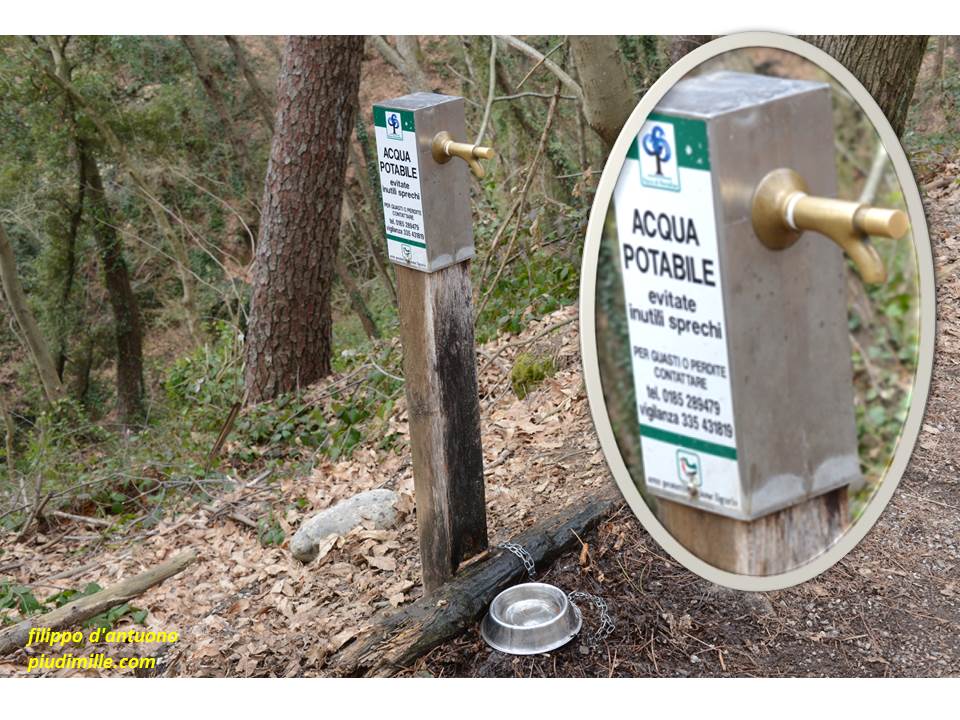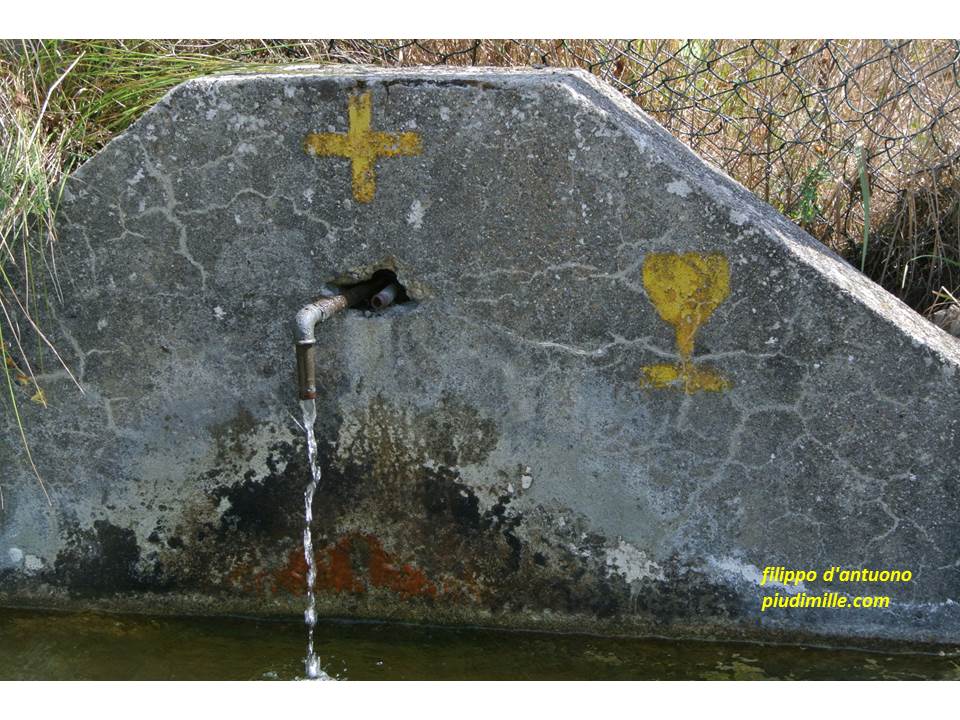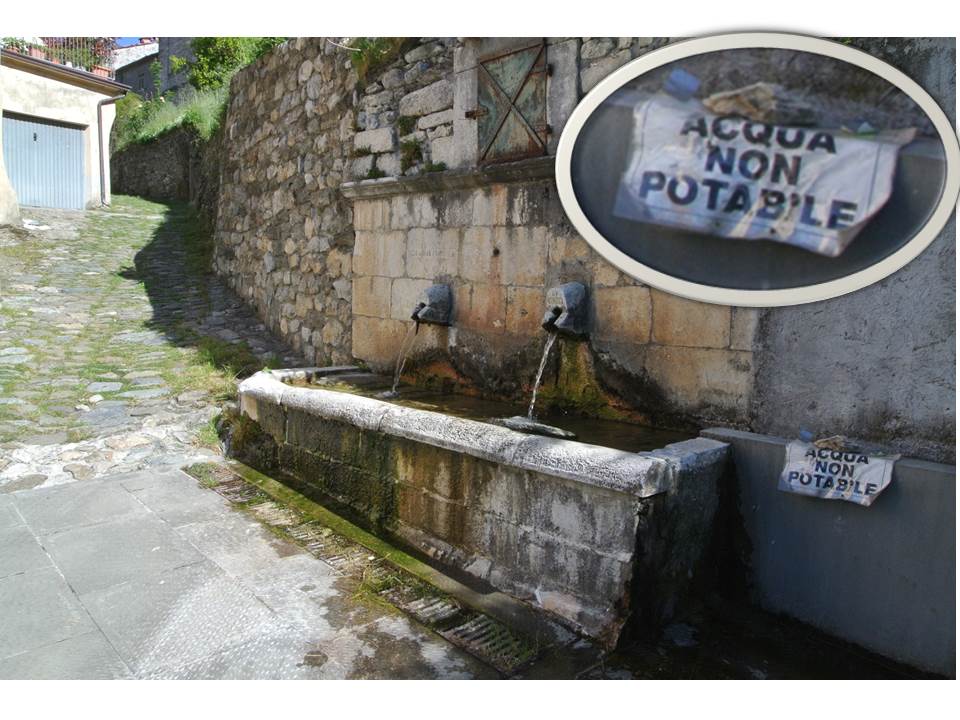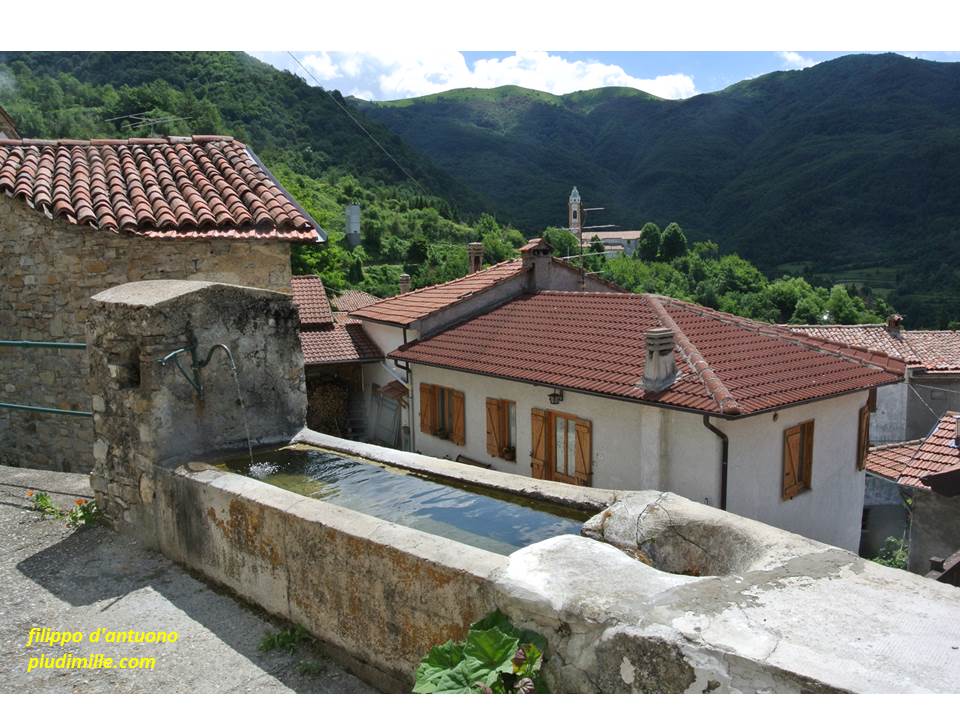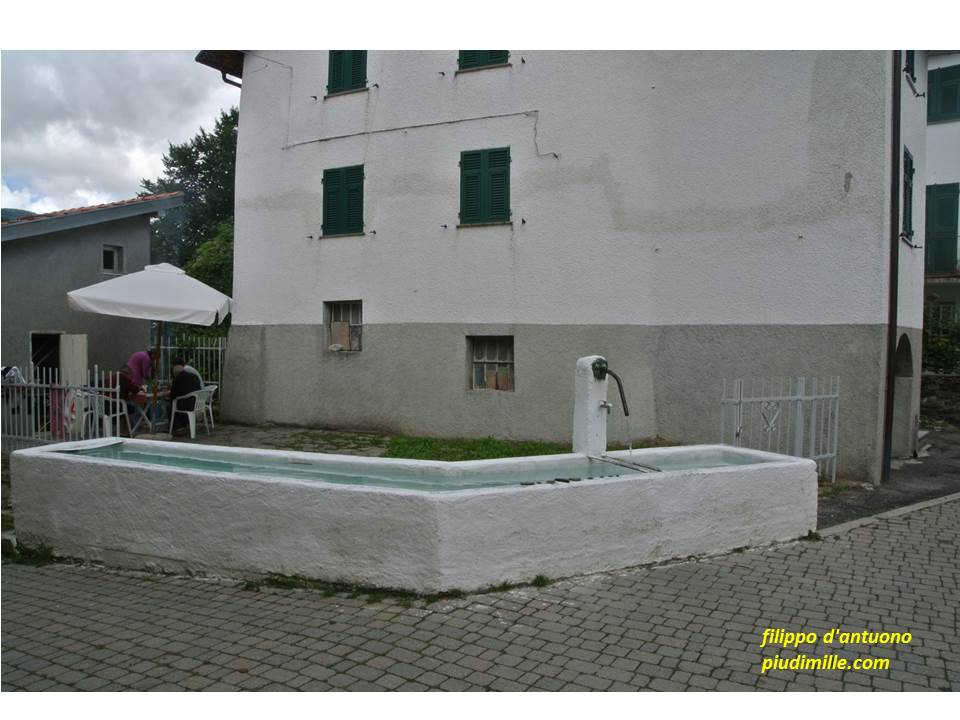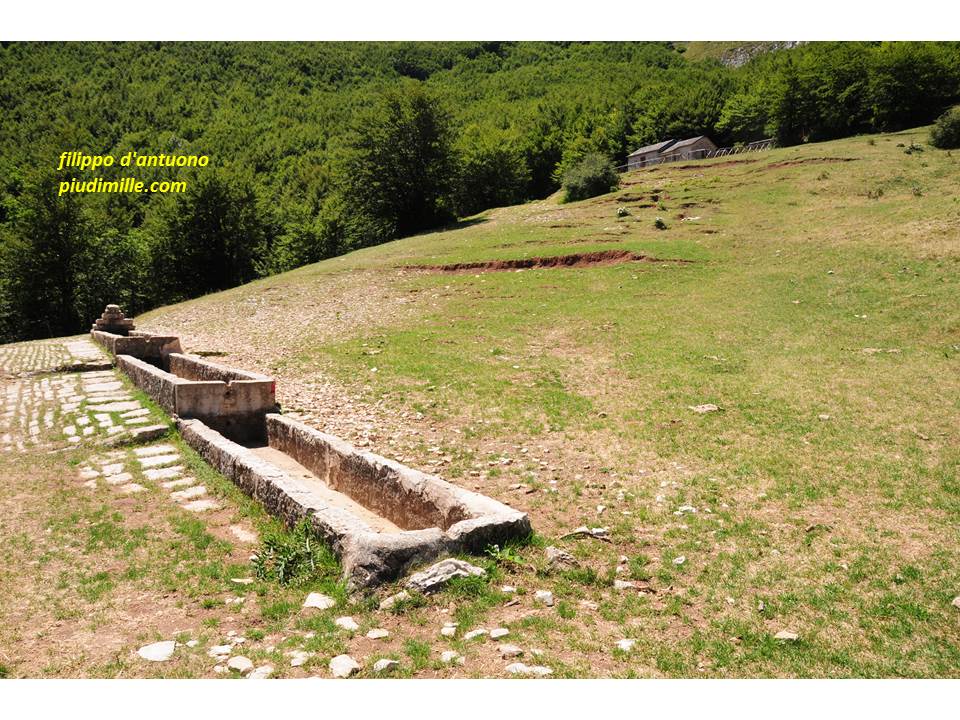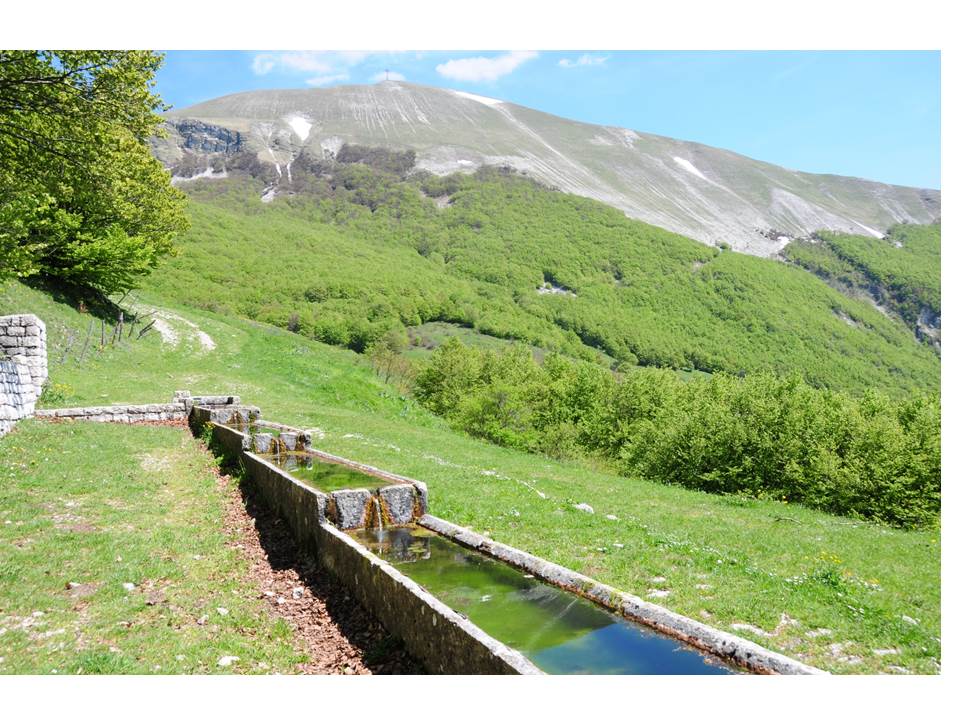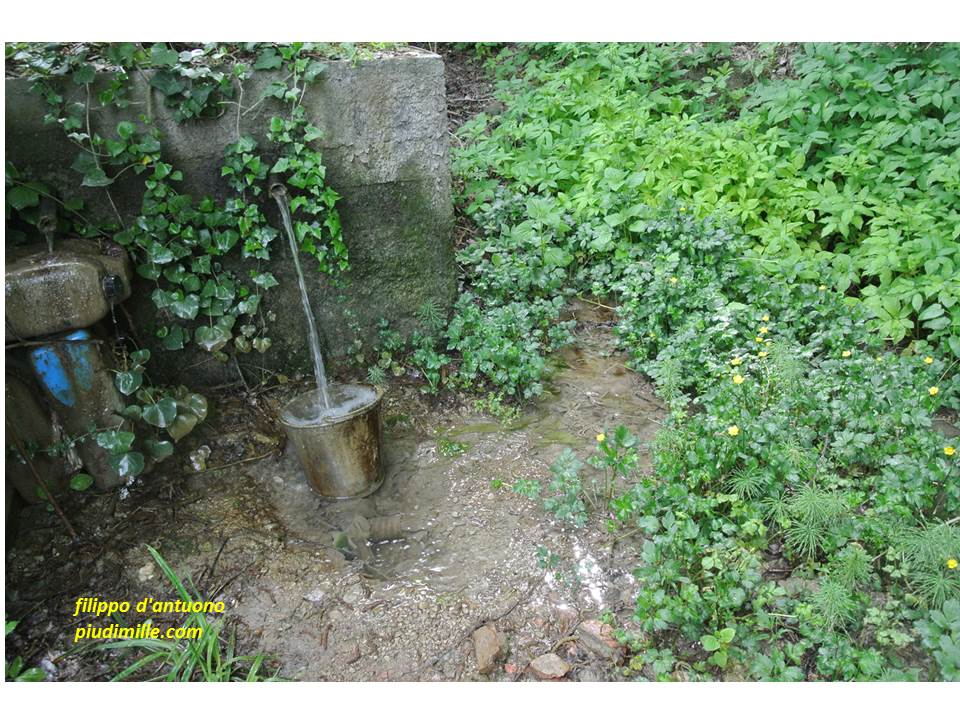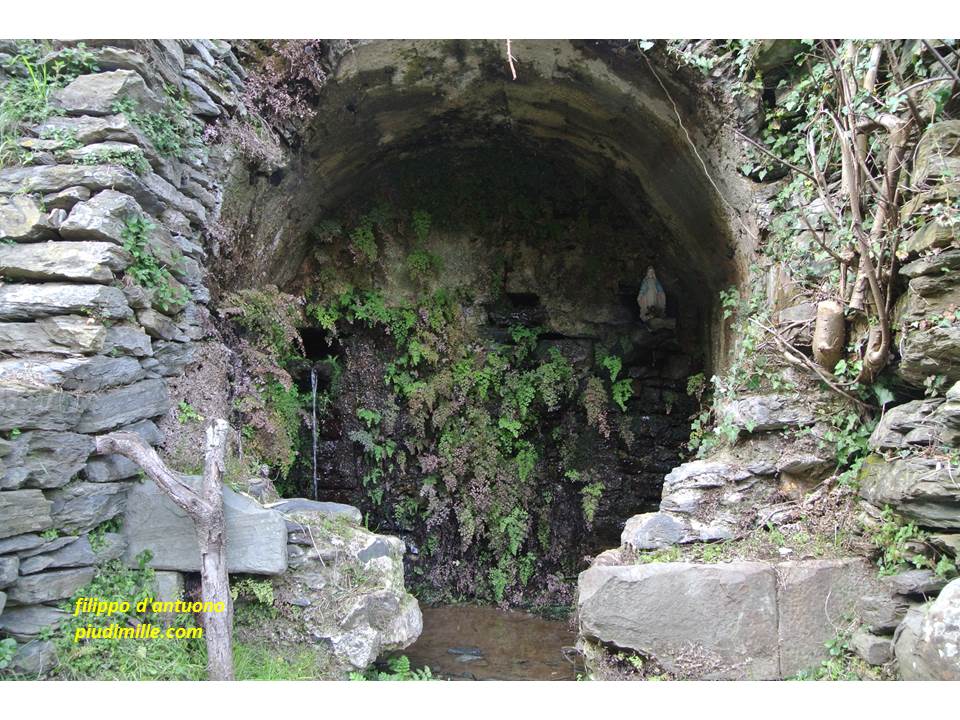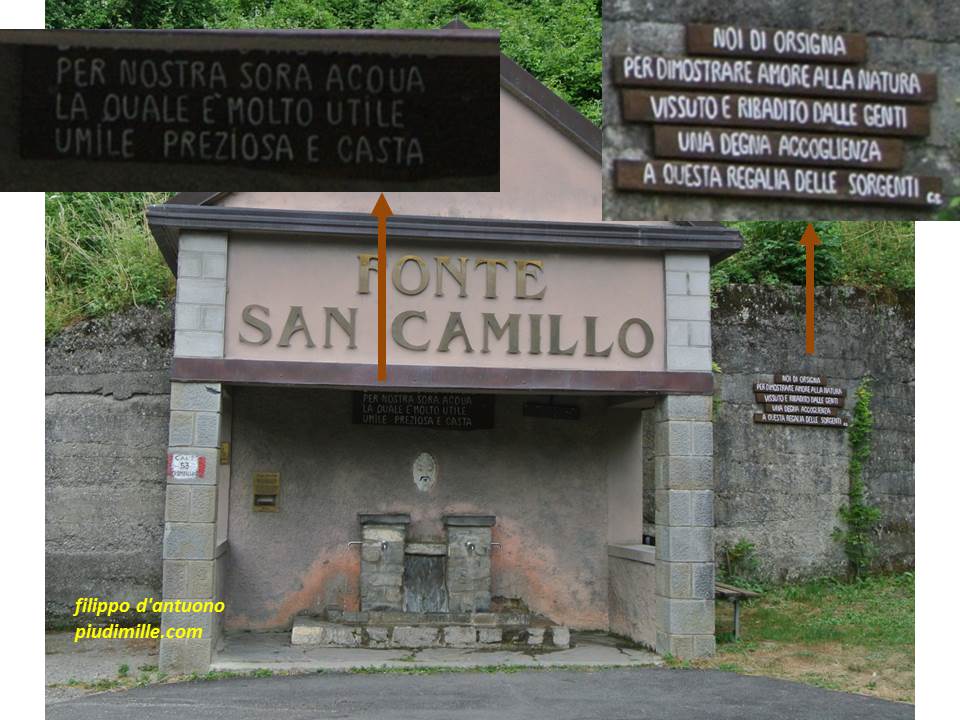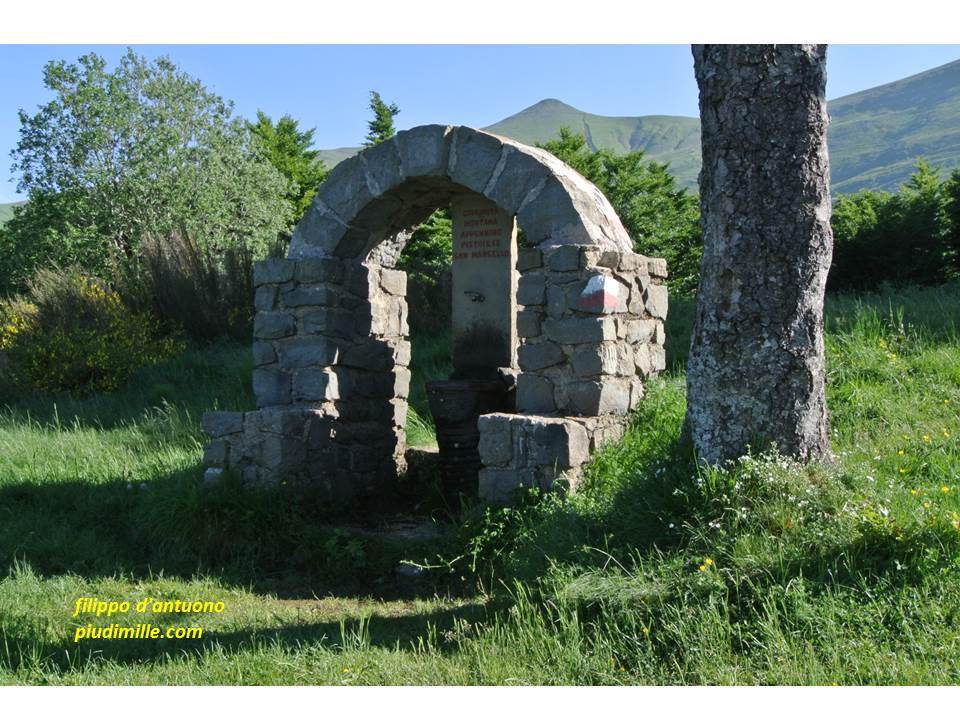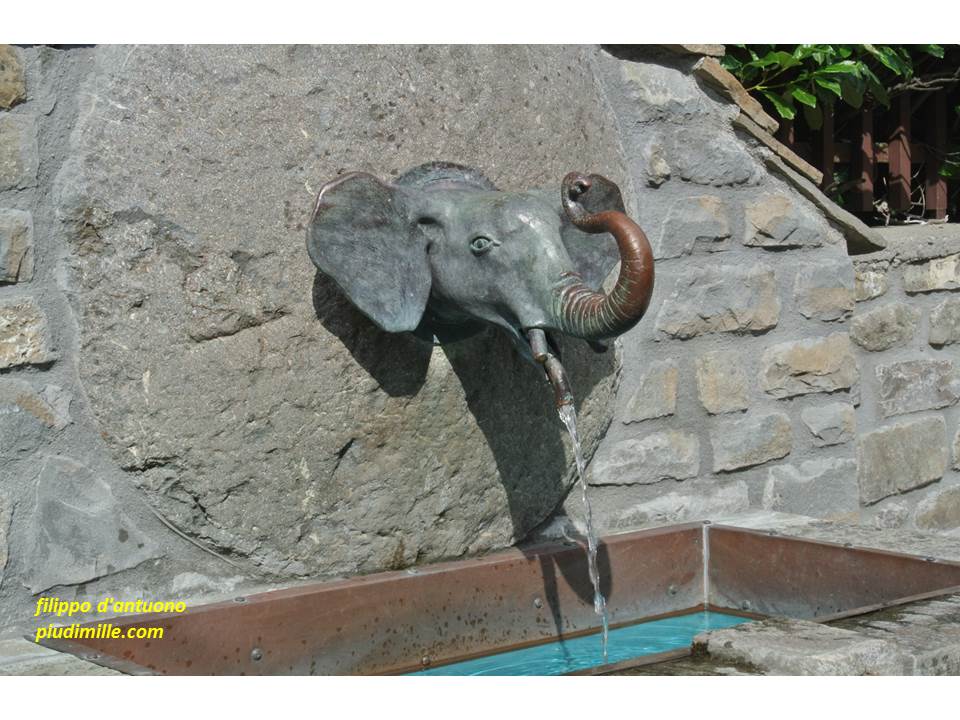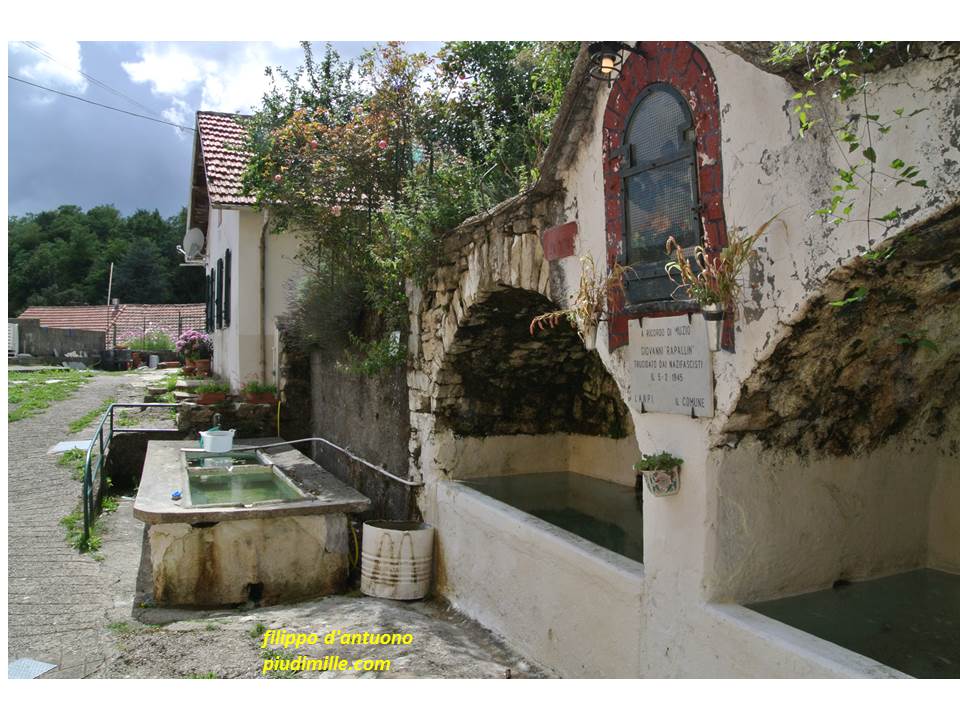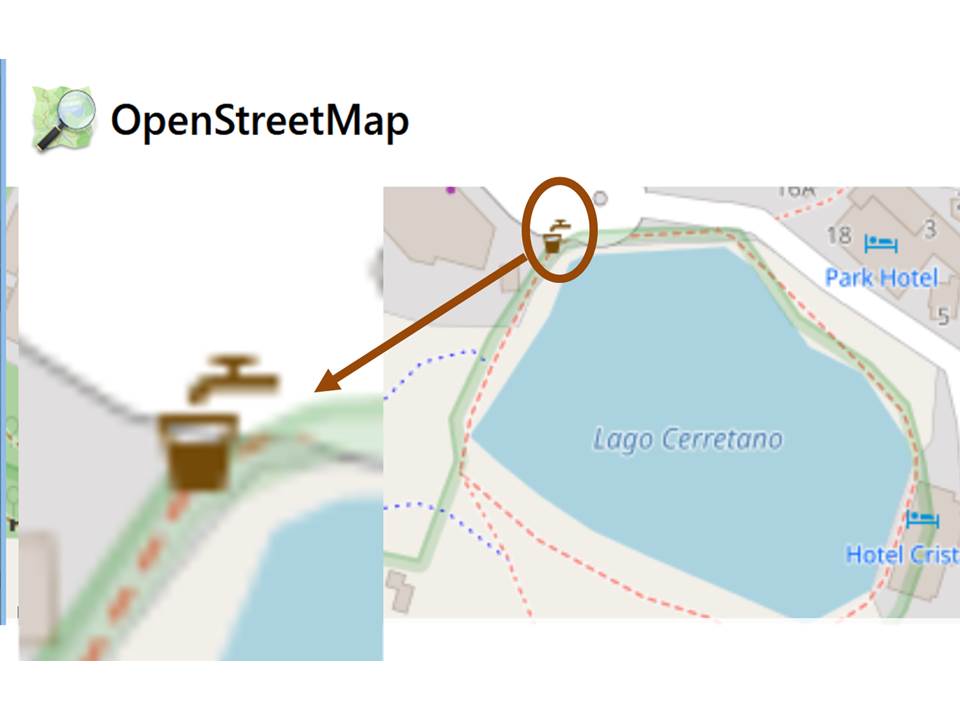HIKING AND DRINKING WATER
flasks, fountains, plastic, sustainability, safety, and more
July 3rd, 2023
Introduction
A water bottle, in the first picture, hereafter abbreviated with “flask”, became a kind of ethical sustainability symbol… With the connected growth of diverse commercial offers. But leave this for a different occasion.
Already in my general introduction about hiking, I presented the topics of water, and related things. By consequence, some repetition is here possible, although I will try to focus mainly on something related to the present hot topic of sustainability.
In the second figure, there is good and evil: a water flask and a plastic bottle.
In the third picture, see a dead wild boar, at the base of a small waterfall, just in the bed of a clear mountain stream.
So… In the name of sustainability, we often receive solicitations of having a flask, to be filled with water on site, instead of using commercial plastic bottled water. Let’s outline a very rough balance.
Plastic bottled water. Water is intercepted from natural springs which exploitation is given in concession to commercial firms. The water is then bottled: a process requiring materials and energy to produce the bottles. Then water is transported, often at distances of hundreds kilometers, not counting additional displacements for local distribution. Finally, empty bottles must be put somewhere: even not considering the case of their dispersal in the environment, although still present, empty bottles can only be reused within the day, or little more, then they end into plastic collection bins; their life cycle is very short, requiring continuous production of more bottles.
Spring water and water flasks. Spring water is a typical “kilometer zero” good. Even if coming from our home tap, water anyway will travel with us only to our hiking destination, and in small amounts. The production of water flask have its own energetic cost, but flask have a longer life cycle than commercial bottles. When they have to be thrown away, flask are however not easily recyclable.
As a whole, even from a mere rudimental estimation, there is no story about the comparison of the environmental impact of commercial plastic bottles, versus flasks, even without considering the problem of plastic dispersal in the environment.
So, the question could be: why to still talk, in everything is apparently so simple. As in other cases, it is perhaps also a question of habits, convenience and, maybe, also of some under-evaluated aspects.
The situation
Changing habits can be a slow, although possible. process; so I stop here.
Let’s hexamine potential under-evaluated aspects, by resuming the dead wild boar in water, representing a clear extreme, although realistic, example. But, as a matter of facts, when we come to tell someone: “let’s take water from here”, almost never we can be sure that water is truly safe. Fountains and springs having a clear statement of drinkable, or undrinkable, water are an absolute minority. Let’s assume that the ones inside villages, that served the local populations for decades, should be safe, but without any certainty.
The fountains inside the villages, that served local populations for decades, should be safe, but without any guarantee.
The village fountains maintain their fascination
The fountains in the mountain outdoors are progressively decaying; they were built by local populations, with the water catchment, channel and outcome works; they have been maintained in time, to serve people and livestock. Since maintenance has been abandoned, water started to be progressively lost, and stops flowing from the fountain; and also without speaking of climate change, another topic that I prefer to avoid. In any case, the safety of these outdoor water points is even more uncertain that that of village fountains.
Finally, “wild” surface waters. Thinking of taking water from a stream is fascinating. In that case however, as the dead wild boar can teach, also unpredictable facts can make this a rather incautious action.
So, the most reasonable advice to give could definitely be: “if we are not sure of what we could find, bring all the water we need from home”.
So finally, we come to convenience.
With the conclusions above, the convenience of throwing a couple of plastic bottles into the backpack can appear to be attractive.
As for myself, I have a specific problem: I need plenty of liquids. During certain “extreme” hikes I ended consuming 6-7 litres in a day, with 4 litres being a rather common amount. Taking such amounts inside water flasks would occupy a rather improbable volume so, I have to confess, plastic bottles are still attractive also for me.
A water flask must be kept clean, especially when we use it also with liquids other than pure water, and this is a job; otherwise, the flask will start stinking, to the point of being thrown away within some time: this especially holds for flasks made of… plastic; and now I stop, once more.
Old water points, at short distance from villages. Now almost abandoned, they represented the only water resource for local people, in the past
Trying to summarise
– Everybody should be welcome, even if coming with plastic bottles; it could be a matter of habits, or some special reason that we do not know. Trying to change this with a hardliner approach can be disrespectful, also inducing the suspect that it could be “green washing”, on behalf of some other interest, generating a justified opposite effect. By the way, try to properly displace our exhausted bottles.
– It would be very important to start a classification of the safety of water from fountains and springs; but this is not certainly a task for hikers or hiking guides, but for local administrations of different kind; and this would also be a very elegant and useful way, in the long term, to devote some money to promote sustainability and conservation, at the same time.
– Meanwhile something can be done. Water has a story. Village fountains belong to the history of places; they often are pieces of local art; they promote observations and thoughts. The same is true for outdoor water points and troughs: they could seem to have been there since ever, but they were built and maintained, also having stories to tell. So, fascination could also be a motivation to use water, if safe, as a part of our hiking experience. With a higher number of people being able to read the stories of water, the chance that a question about the scope of devoting energies and resources for the maintenance of these artifacts, and to know about the safety of water, could have a chance of finding a spontaneous and positive answer.
To end
To end, I give here a couple of contributions, that however do not respond to the question of water safety, when water is not certified:
– a link to the web site fontanelle.org, that reports many officially or unofficially detected fountains
– the Open street maps, with special respect to towns and villages, also report the symbol with a glass and tap, that should indicate the presence of usable water points.
The direct verification of these things in single places, also asking to local people, may help to contribute at supplying water from local sources.
Greetings to all !
